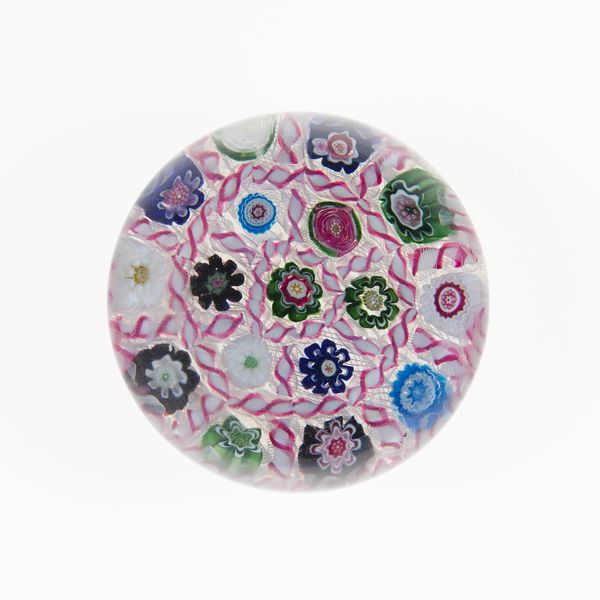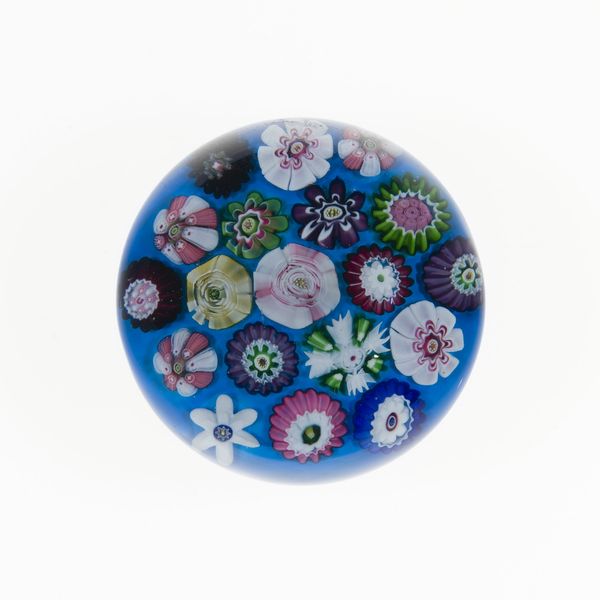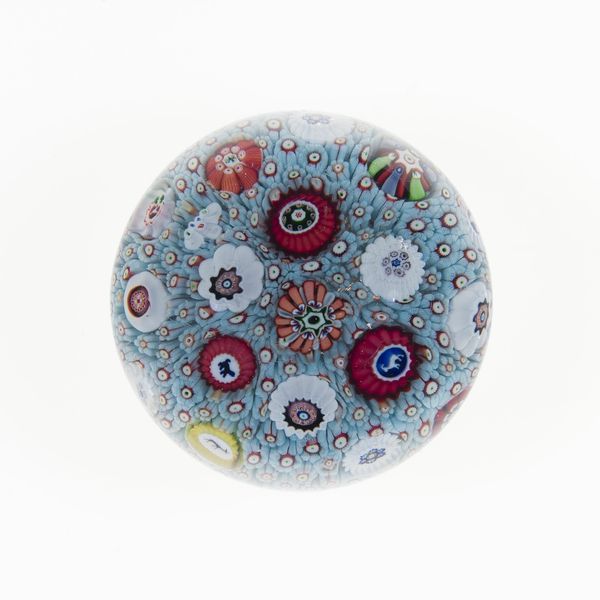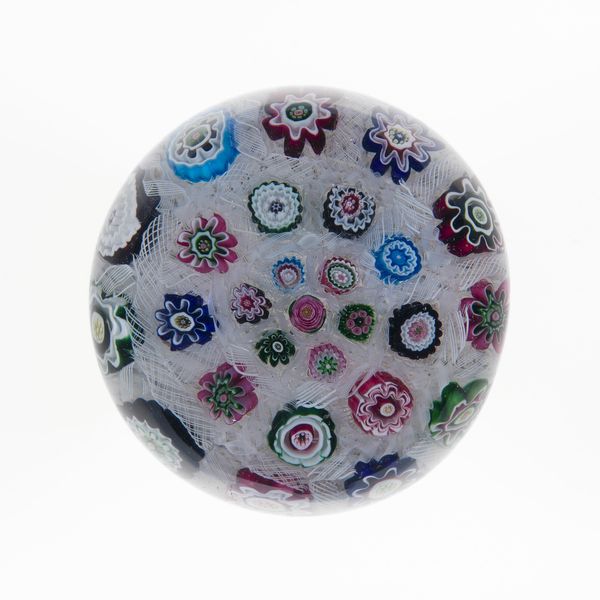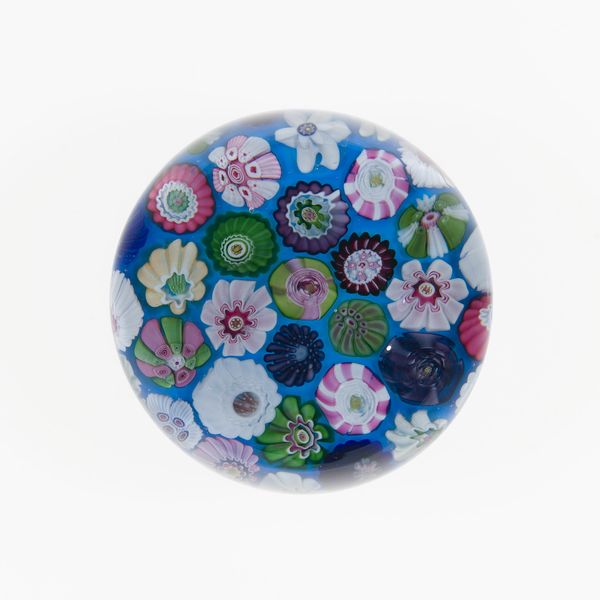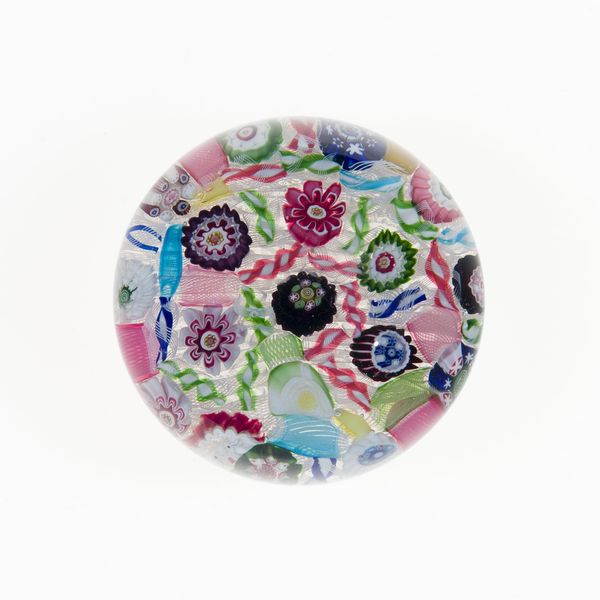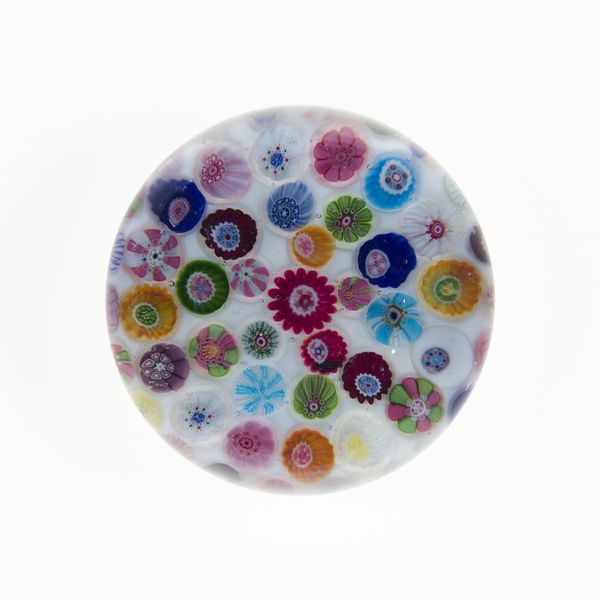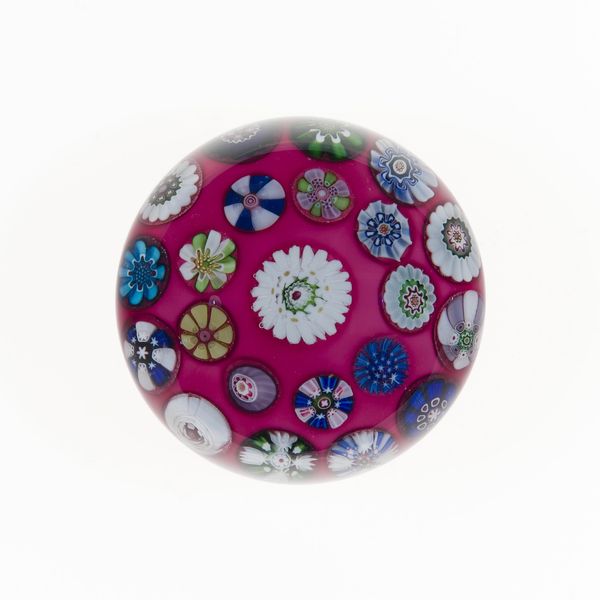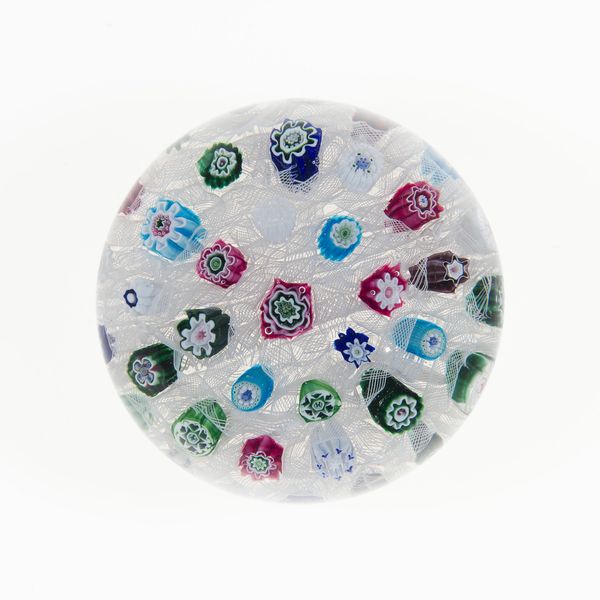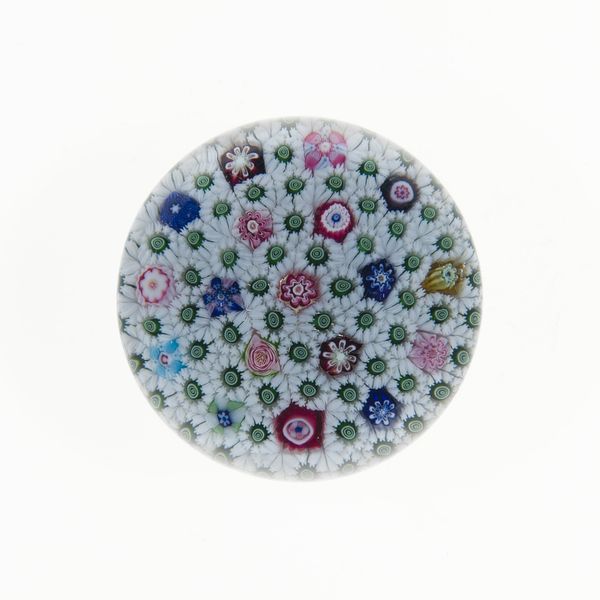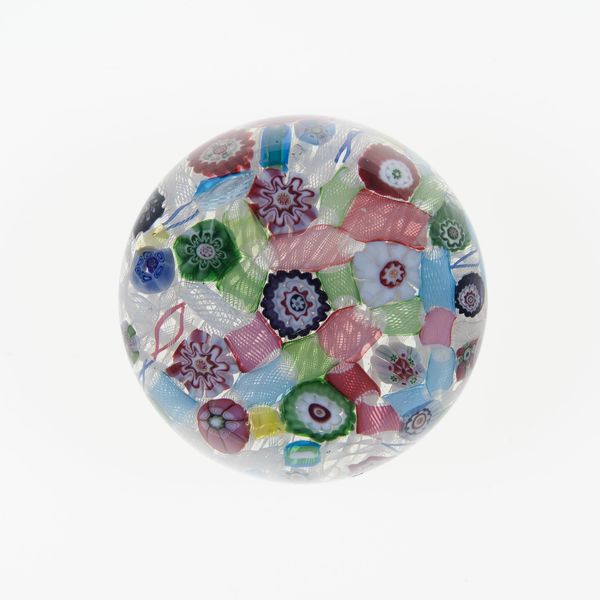
glass
#
glass
#
decorative-art
Dimensions: Diam. 7.7 cm (3 1/16 in.)
Copyright: Public Domain
Editor: Here we have a glass paperweight, crafted around 1845 to 1860 by the Clichy Glasshouse. It's such a charming object. How should we interpret the significance of this object? Curator: Well, it’s easy to see this paperweight simply as a beautiful trinket. But what happens if we look more closely at its construction? Consider the process—the intense labor, the skilled glasswork, the assembly of those millefiori elements. Editor: It’s true, I hadn't thought about the labor involved. The individual pieces must take precision. Curator: Exactly! This wasn't just a decoration. These were meticulously crafted by artisans. Think about how this kind of labor-intensive, luxury good functions within society. Who could afford it? What does it say about class and consumption at the time? Editor: So, the paperweight, while pretty, tells a story about the people who made it and those who purchased it. Are the flowers representative of a certain social class or ideal? Curator: Precisely. Its production reveals the complex social and economic conditions of its time. The material itself—glass— once rare and precious, was becoming increasingly accessible due to industrial advancements. Think of the change and the shifting values tied to these technological processes. Editor: That gives me a completely different perspective on it. It's more than just pretty glass; it is history embedded in the glass-making techniques. Curator: Indeed! Seeing the materiality transforms a simple decorative object into something significant.
Comments
No comments
Be the first to comment and join the conversation on the ultimate creative platform.

